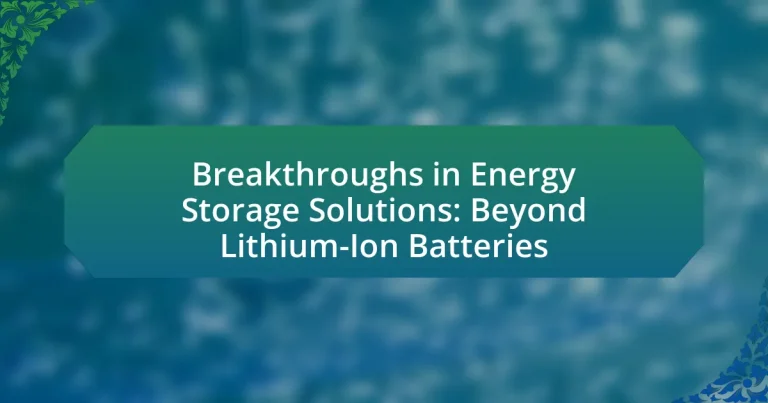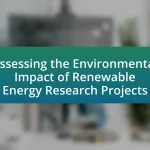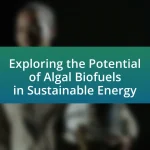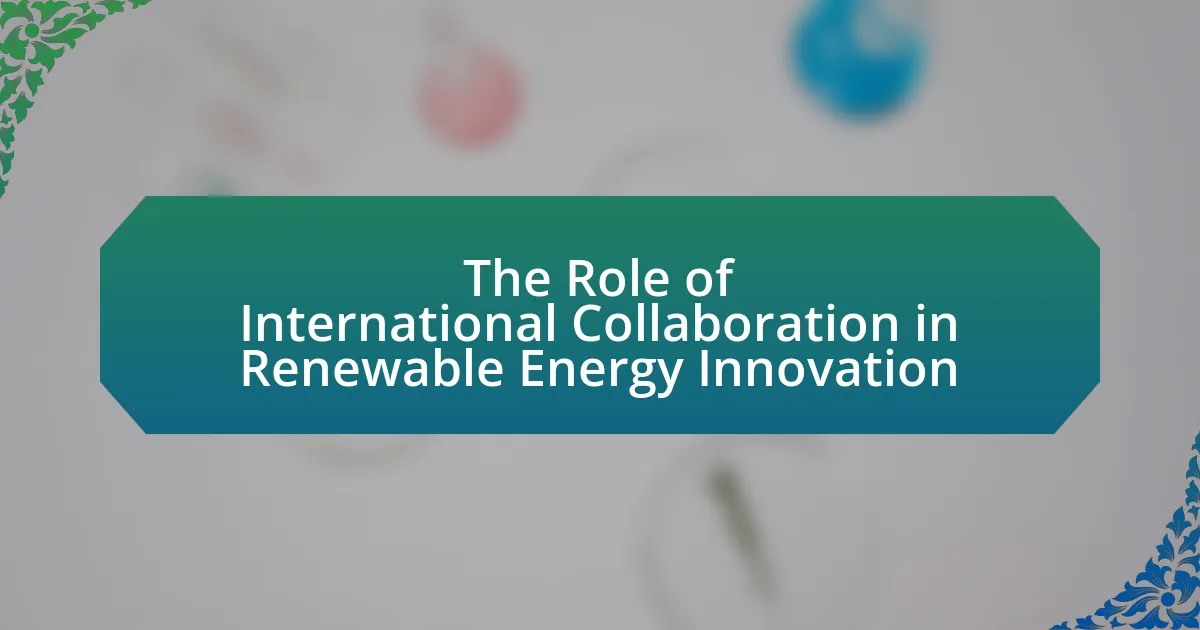The article focuses on recent breakthroughs in energy storage solutions beyond lithium-ion batteries, highlighting advancements such as solid-state batteries, sodium-ion batteries, and flow batteries. It discusses how these technologies differ from traditional lithium-ion systems in terms of materials, safety, and performance, while also addressing their potential applications in renewable energy integration, electric vehicles, and grid management. Key innovations driving these developments are examined, along with the challenges and limitations faced in commercialization, including economic barriers and environmental concerns. The article emphasizes the importance of sustainable practices and recycling options for new energy storage systems, providing best practices for implementation.
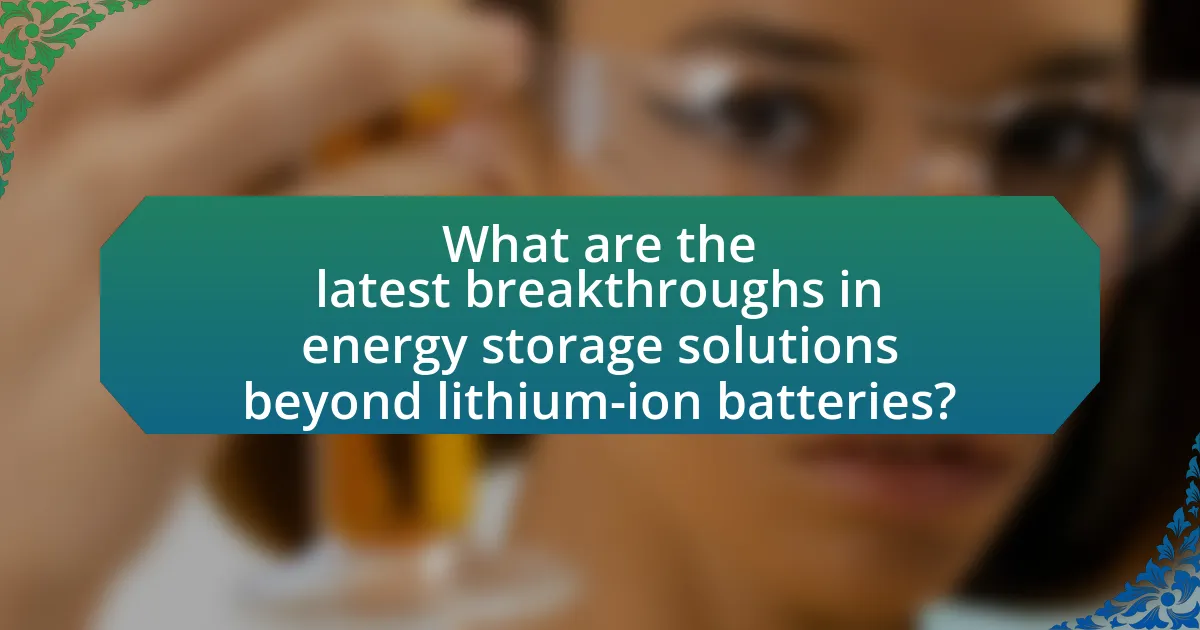
What are the latest breakthroughs in energy storage solutions beyond lithium-ion batteries?
Recent breakthroughs in energy storage solutions beyond lithium-ion batteries include solid-state batteries, sodium-ion batteries, and flow batteries. Solid-state batteries utilize a solid electrolyte instead of a liquid one, enhancing safety and energy density, with companies like QuantumScape reporting energy densities exceeding 400 Wh/kg. Sodium-ion batteries, developed by researchers at Faradion, offer a more abundant and cost-effective alternative, achieving similar performance metrics to lithium-ion batteries. Flow batteries, such as those from Vanadium Redox technology, provide scalable energy storage solutions ideal for grid applications, with the ability to decouple energy and power capacity, allowing for longer discharge times and improved cycle life.
How do these breakthroughs differ from traditional lithium-ion technology?
Breakthroughs in energy storage solutions differ from traditional lithium-ion technology primarily in their materials and performance characteristics. For instance, solid-state batteries utilize solid electrolytes instead of liquid ones, enhancing safety and energy density, which can exceed 300 Wh/kg compared to lithium-ion’s typical 150-250 Wh/kg. Additionally, innovations like lithium-sulfur and sodium-ion batteries promise lower costs and greater sustainability due to the abundance of sulfur and sodium compared to lithium. These advancements are supported by research indicating that solid-state batteries can significantly reduce the risk of thermal runaway, a common issue with lithium-ion batteries, thus improving overall safety and longevity.
What are the key innovations driving these new energy storage solutions?
Key innovations driving new energy storage solutions include solid-state batteries, flow batteries, and advanced supercapacitors. Solid-state batteries utilize a solid electrolyte instead of a liquid one, enhancing energy density and safety, as evidenced by companies like QuantumScape achieving over 400 Wh/kg in energy density. Flow batteries, such as those developed by Redflow, allow for scalable energy storage with longer cycle life and lower costs, making them suitable for grid applications. Advanced supercapacitors, like those from Skeleton Technologies, offer rapid charge and discharge capabilities, improving performance in applications requiring quick energy bursts. These innovations collectively address limitations of traditional lithium-ion batteries, enhancing efficiency, safety, and sustainability in energy storage.
How do these innovations impact energy efficiency and sustainability?
Innovations in energy storage solutions, such as solid-state batteries and flow batteries, significantly enhance energy efficiency and sustainability by increasing energy density and reducing reliance on finite resources. For instance, solid-state batteries can store more energy in a smaller volume compared to traditional lithium-ion batteries, leading to longer-lasting energy sources and reduced waste. Additionally, flow batteries utilize abundant materials like vanadium, which can be recycled, promoting sustainability. Research indicates that these advanced storage technologies can improve the overall efficiency of renewable energy systems, enabling better integration of solar and wind power into the grid, thus reducing greenhouse gas emissions and fostering a cleaner energy future.
What are the potential applications of these new energy storage technologies?
New energy storage technologies have potential applications in renewable energy integration, electric vehicles, grid stability, and portable electronics. These technologies, such as solid-state batteries and flow batteries, enable efficient storage of energy generated from renewable sources like solar and wind, facilitating their use during periods of low generation. For instance, solid-state batteries offer higher energy density and safety compared to traditional lithium-ion batteries, making them ideal for electric vehicles, which require lightweight and long-lasting power sources. Additionally, advanced energy storage solutions can enhance grid stability by providing backup power and balancing supply and demand, thus supporting the transition to a more resilient energy infrastructure.
Which sectors stand to benefit the most from these advancements?
The sectors that stand to benefit the most from advancements in energy storage solutions beyond lithium-ion batteries include renewable energy, electric vehicles, and grid management. Renewable energy sectors, such as solar and wind, will gain from improved storage technologies that enhance energy reliability and efficiency, allowing for better integration of intermittent energy sources. Electric vehicle manufacturers will benefit from advancements that provide longer range and faster charging times, making electric vehicles more appealing to consumers. Grid management will see enhancements through energy storage systems that stabilize supply and demand, reduce peak loads, and improve overall grid resilience. These benefits are supported by ongoing research and development efforts aimed at creating more efficient, cost-effective, and sustainable energy storage solutions.
How can these technologies support renewable energy integration?
Advanced energy storage technologies, such as solid-state batteries and flow batteries, can significantly enhance renewable energy integration by providing efficient energy management and grid stability. These technologies enable the storage of excess energy generated from renewable sources like solar and wind, allowing for energy supply during periods of low generation. For instance, solid-state batteries offer higher energy density and safety compared to traditional lithium-ion batteries, which can lead to longer-lasting energy storage solutions. Flow batteries, on the other hand, provide scalable energy storage that can be easily adjusted to meet varying energy demands. According to a report by the International Renewable Energy Agency, integrating advanced storage solutions can increase the share of renewables in the energy mix, thereby reducing reliance on fossil fuels and enhancing energy security.
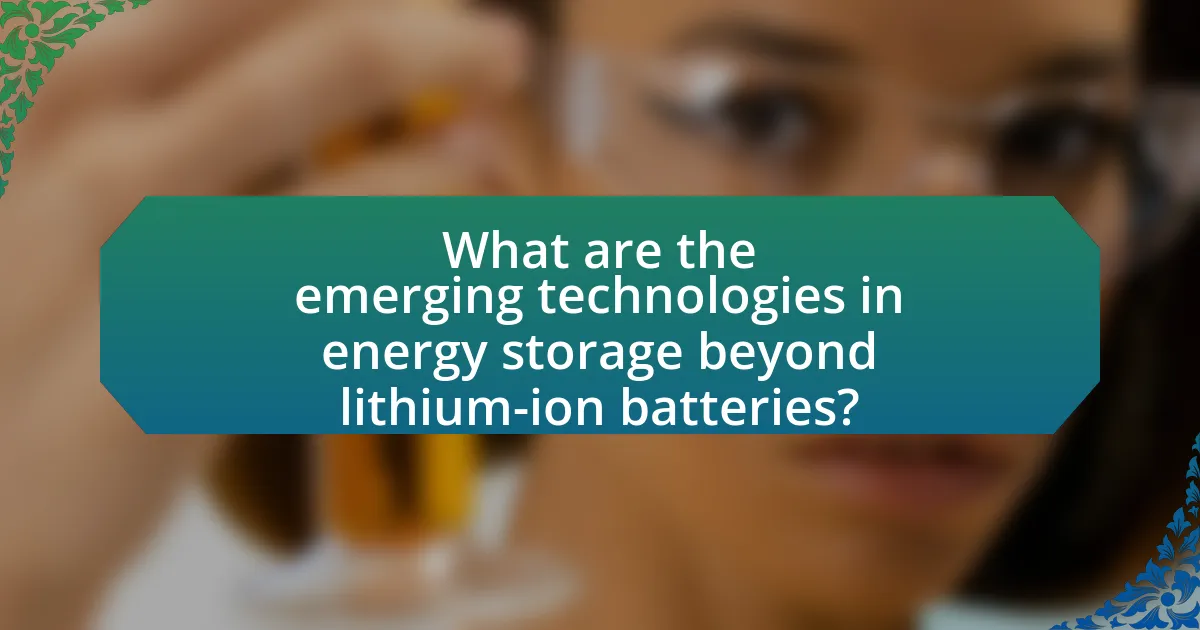
What are the emerging technologies in energy storage beyond lithium-ion batteries?
Emerging technologies in energy storage beyond lithium-ion batteries include solid-state batteries, flow batteries, and sodium-ion batteries. Solid-state batteries utilize a solid electrolyte instead of a liquid one, enhancing safety and energy density, with companies like QuantumScape demonstrating prototypes that could significantly outperform traditional lithium-ion batteries. Flow batteries, such as vanadium redox flow batteries, offer scalability and long cycle life, making them suitable for large-scale energy storage applications, as evidenced by projects like the one implemented by the Australian Renewable Energy Agency. Sodium-ion batteries, which leverage abundant sodium resources, are being developed by companies like Faradion, showing promise for cost-effective and sustainable energy storage solutions.
What are solid-state batteries and how do they work?
Solid-state batteries are energy storage devices that utilize a solid electrolyte instead of the liquid or gel electrolytes found in traditional lithium-ion batteries. These batteries work by allowing lithium ions to move between the anode and cathode through the solid electrolyte during charging and discharging cycles. The solid electrolyte enhances safety by reducing the risk of leakage and flammability associated with liquid electrolytes, while also potentially increasing energy density and longevity. Research indicates that solid-state batteries can achieve higher energy densities, with some estimates suggesting they could provide up to 50% more energy than conventional lithium-ion batteries, making them a promising advancement in energy storage technology.
What advantages do solid-state batteries offer over lithium-ion batteries?
Solid-state batteries offer several advantages over lithium-ion batteries, including higher energy density, improved safety, and longer lifespan. The energy density of solid-state batteries can exceed 300 Wh/kg, compared to approximately 150-250 Wh/kg for traditional lithium-ion batteries, allowing for more energy storage in a smaller volume. Additionally, solid-state batteries utilize solid electrolytes, which significantly reduce the risk of flammability and thermal runaway incidents associated with liquid electrolytes in lithium-ion batteries. Furthermore, solid-state batteries can endure more charge-discharge cycles, leading to a lifespan that can be two to three times longer than that of lithium-ion batteries, enhancing their overall efficiency and reliability in various applications.
What challenges do solid-state batteries face in commercialization?
Solid-state batteries face significant challenges in commercialization, primarily related to manufacturing scalability, cost, and material stability. The production of solid-state batteries requires advanced materials and processes that are not yet optimized for large-scale manufacturing, leading to high production costs. Additionally, the solid electrolytes used in these batteries often exhibit issues with ionic conductivity and interface stability, which can affect performance and longevity. Research indicates that achieving a balance between energy density, safety, and cost-effectiveness remains a critical hurdle, as evidenced by ongoing studies in the field, such as those published in the Journal of Power Sources, which highlight the complexities of solid electrolyte materials and their integration into commercial applications.
How do flow batteries operate and what are their benefits?
Flow batteries operate by using two electrolyte solutions stored in separate tanks, which are pumped through a cell stack where electrochemical reactions occur to generate electricity. This design allows for the decoupling of energy storage capacity and power output, enabling longer discharge times and scalability. The benefits of flow batteries include their long cycle life, ability to be easily scaled for large applications, and reduced risk of thermal runaway, making them safer compared to traditional batteries. Additionally, flow batteries can be charged and discharged simultaneously, enhancing their efficiency in energy management systems.
What types of flow batteries are currently being developed?
Currently, several types of flow batteries are being developed, including vanadium redox flow batteries, zinc-bromine flow batteries, and organic flow batteries. Vanadium redox flow batteries utilize vanadium ions in different oxidation states to store energy, offering scalability and long cycle life, which is supported by their use in large-scale energy storage applications. Zinc-bromine flow batteries combine zinc and bromine to achieve high energy density and lower costs, making them suitable for commercial energy storage. Organic flow batteries, which use organic molecules as electrolytes, are being researched for their potential to provide environmentally friendly and cost-effective energy storage solutions. These advancements reflect ongoing efforts to enhance energy storage technologies beyond traditional lithium-ion systems.
How do flow batteries compare to traditional battery technologies in terms of lifespan?
Flow batteries typically have a longer lifespan compared to traditional battery technologies, such as lithium-ion batteries. Flow batteries can last over 10,000 cycles, while lithium-ion batteries generally last between 500 to 2,000 cycles before significant capacity degradation occurs. This extended lifespan is due to the design of flow batteries, which allows for the separation of energy storage and power generation components, reducing wear and tear during operation. Additionally, flow batteries can be easily maintained and have the potential for longer operational life due to their ability to be recharged without significant degradation, making them a more durable option for long-term energy storage solutions.
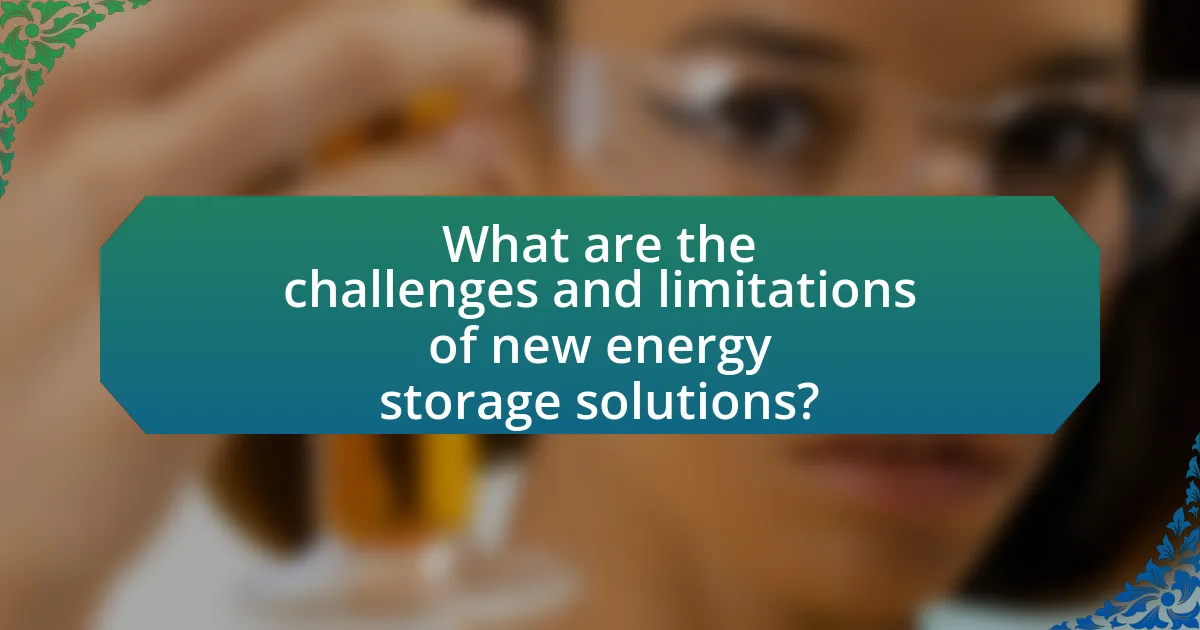
What are the challenges and limitations of new energy storage solutions?
New energy storage solutions face several challenges and limitations, including high costs, scalability issues, and limited lifespan. For instance, technologies like solid-state batteries and flow batteries often require expensive materials and complex manufacturing processes, which can hinder widespread adoption. Additionally, many of these solutions struggle to scale effectively for large-scale applications, as seen in the case of sodium-ion batteries, which are still in developmental stages and not yet commercially viable. Furthermore, the lifespan of certain alternatives, such as lithium-sulfur batteries, is limited due to rapid degradation, impacting their long-term usability. These factors collectively pose significant barriers to the integration of new energy storage technologies into existing energy systems.
What are the economic barriers to adopting these new technologies?
The economic barriers to adopting new energy storage technologies include high initial capital costs, limited access to financing, and uncertain return on investment. High initial capital costs can deter companies from investing in advanced technologies, as they often require significant upfront expenditures for research, development, and infrastructure. Limited access to financing, particularly for startups and smaller companies, restricts their ability to scale and implement these technologies. Additionally, uncertain return on investment arises from fluctuating market conditions and the evolving regulatory landscape, making it difficult for investors to predict profitability. According to a report by the International Energy Agency, the cost of energy storage systems can be a significant hurdle, with estimates indicating that costs need to decrease by 50% or more to achieve widespread adoption.
How do production costs affect the scalability of these energy storage solutions?
Production costs significantly impact the scalability of energy storage solutions by determining the feasibility of large-scale deployment. High production costs can limit the ability of manufacturers to produce energy storage systems at a competitive price, thereby restricting market entry and adoption. For instance, if the production cost of a new energy storage technology, such as solid-state batteries, remains high—estimated at around $300 per kilowatt-hour—it may hinder widespread implementation compared to traditional lithium-ion batteries, which have seen costs drop to approximately $100 per kilowatt-hour. Consequently, lower production costs enable manufacturers to scale up production, reduce prices, and enhance market penetration, ultimately facilitating broader adoption of innovative energy storage solutions.
What role does government policy play in overcoming these barriers?
Government policy plays a crucial role in overcoming barriers to breakthroughs in energy storage solutions beyond lithium-ion batteries by providing funding, regulatory support, and incentives for research and development. For instance, policies that allocate federal grants for innovative energy technologies can stimulate advancements in alternative battery chemistries, such as solid-state or flow batteries. Additionally, regulations that promote the adoption of renewable energy sources create a market demand for efficient energy storage solutions, encouraging private sector investment. Evidence of this impact can be seen in the U.S. Department of Energy’s initiatives, which have funded over $1 billion in energy storage research since 2010, leading to significant technological advancements and cost reductions in emerging battery technologies.
What environmental concerns are associated with new energy storage technologies?
New energy storage technologies raise several environmental concerns, primarily related to resource extraction, waste management, and potential ecological impacts. The mining of materials such as lithium, cobalt, and nickel for batteries can lead to habitat destruction, water pollution, and significant carbon emissions. For instance, lithium extraction in regions like South America has been linked to water depletion and soil degradation. Additionally, the disposal of batteries poses challenges, as improper recycling can result in toxic chemical leakage, harming ecosystems. Research indicates that the lifecycle of energy storage systems must be managed carefully to mitigate these environmental risks, emphasizing the need for sustainable practices in sourcing and recycling materials.
How do the materials used in these technologies impact sustainability?
The materials used in energy storage technologies significantly impact sustainability by influencing resource extraction, energy efficiency, and end-of-life disposal. For instance, the shift from lithium-ion batteries to alternatives like sodium-ion or solid-state batteries can reduce reliance on scarce materials such as cobalt and lithium, which are often mined under environmentally damaging conditions. Research indicates that sodium-ion batteries utilize more abundant materials, potentially lowering environmental degradation associated with mining. Additionally, the recyclability of materials plays a crucial role; technologies that incorporate recyclable components can minimize waste and promote a circular economy. Studies show that improving the recyclability of battery materials can lead to a reduction in carbon emissions by up to 50% compared to traditional lithium-ion systems. Thus, the choice of materials directly affects the overall sustainability of energy storage solutions.
What are the recycling options for new energy storage systems?
Recycling options for new energy storage systems include mechanical recycling, hydrometallurgical processes, and direct recycling methods. Mechanical recycling involves shredding and separating materials to recover metals and other components, while hydrometallurgical processes use chemical solutions to extract valuable materials from spent batteries. Direct recycling aims to preserve the structure of battery components, allowing for the reuse of materials without extensive processing. These methods are supported by research indicating that they can significantly reduce waste and recover up to 95% of valuable materials, enhancing sustainability in energy storage solutions.
What best practices should be considered when implementing new energy storage solutions?
When implementing new energy storage solutions, it is essential to conduct a thorough feasibility study to assess technical, economic, and environmental factors. This study should include evaluating the specific energy needs, potential site locations, and integration with existing energy systems. Additionally, selecting the appropriate technology—such as solid-state batteries, flow batteries, or other innovative solutions—based on performance metrics like energy density, cycle life, and safety is crucial.
Furthermore, establishing a robust supply chain for materials and components is vital to ensure reliability and sustainability. Engaging stakeholders, including local communities and regulatory bodies, fosters transparency and support for the project. Finally, implementing a comprehensive monitoring and maintenance plan will enhance the longevity and efficiency of the energy storage system. These practices are supported by industry reports indicating that projects adhering to these guidelines have higher success rates and operational efficiency.
